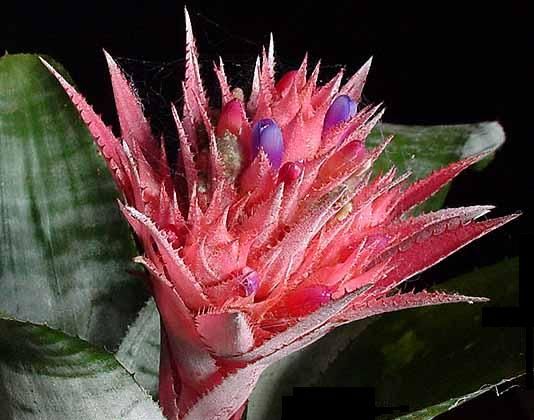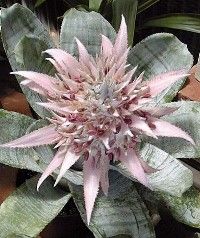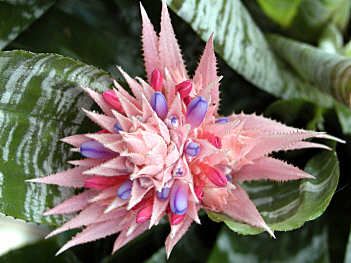Aechmea fasciata
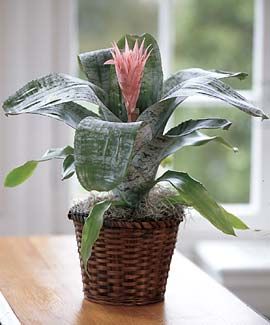
Common name: urn plant, vase plant, silver vase bromeliad
Family: Bromeliaceae
Height: up to 2 feet
Spread: up to 1 feet and 6 inches
Habit: clump-forming
Light requirement: plant grows in part shade/part sun
Soil: coarse, quick draining
Soil pH: acidic-pH-5.5-6.5
Soil moisture: average
Soil tolerances: acidic; alkaline; clay; sand; loam
Plant spacing: 18 to 24 inches
Drought tolerance: high
Bloom time: summer, fall, winter
Flower color: red, pink, blue
Bloom size: 3 in. to 3 in.
Foliage color: gray-green
Foliage size: 2 feet to 2 feet
Growth rate: slow
Description
Aechmea fasciata is an epiphytic Bromeliad from Brazil. Aechmeas are among the most beautiful of all Bromeliads for indoor decoration. Large, colorful blooms rise high above the vase-shaped rosette of leaves.
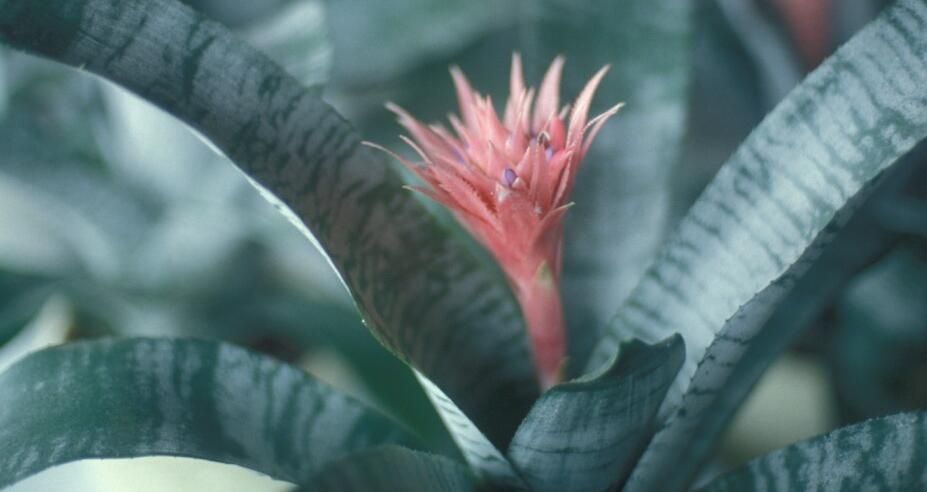
The urn plant is a popular, easy-care houseplant with arching gray-green leaves banded with silver. The silvery foliage holds a bold, bright pink-red and blue flower head. Bloom starts in midsummer and usually lasts several months. Grow the urn plant in bright light, protected from direct sun.
Blooming time
Most Bromeliads will flower naturally when they reach maturity; they can also be made to flower by supplying the substances which begin bud formation: for example, enclose the entire plant ( with its cup empty of water to prevent excessive humidity buildup) in a plastic bag together with a ripe apple. The apple gives off ethylene gas which stimulates flowering in Bromeliads. Leave plant and apple in the plastic bag for 7-10 days; flowers will appear in 1-2 months.
Add peatmoss to an equal volume of general house plant mix for a humusy and well drained combination. Soil may dry out between waterings. Keep water in central cup formed by leafy rosette. Fertilize every 1-2 months, applied to the soil. Or fill the cup with half-strength dilution of fertilizer every month.
In mild climates, or during the summer, water your urn plants outdoors and leave them outside over a weekend to give them the fresh air that discourages mealy bugs. After blooming, the plant will die and produce offsets, or pups, which can be clipped and potted up. In 2-3 years, these will bloom and reproduce.
|
|
|
|
How to sow and plant
Grow in a pot just large enough to stabilize the plant; an oversize container can lead to rot. Use any coarse, fast-draining, acidic potting mix, such as packaged cymbidium orchid mix or a home-made formula of equal parts perlite, pine chips, and commercial potting soil.
Water and fertilizing
The urn plant and other "tank" bromeliads, whose rosettes contain central reserves for water, should be thoroughly drenched so the reservoirs are emptied and replenished biweekly. Water soil only when it dries out. Feed monthly with a balanced, all-purpose houseplant fertilizer diluted to one-quarter strength.
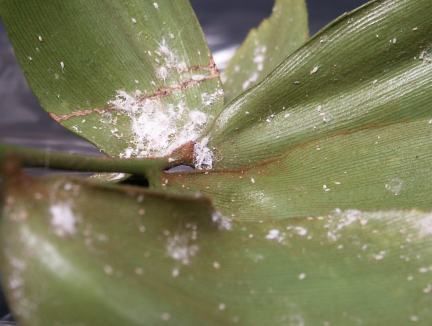 Pests and diseases
Pests and diseases
The urn plant is relatively carefree, but mealybugs may occur. Control mealybugs with insecticidal soap, following label directions.
Propagation
After flowering, Bromeliads produce side shoots (offsets), which may be removed while young and rooted for additional plants.
Info:
- the urn plant is a member of the bromeliad family, as is the familiar pineapple. Bromeliads are characterized by a distinct circular arrangement of leathery leaves from which a stout bloom arises.
Articole asemănătoare
-
Aechmea fasciata - o bromelie usor de ingrijt
Denumire populara: planta vaza (la americani) Familie: Bromeliaceae Originara din Brazilia, Aechmea fasciata este considerata a fi printre cele mai frumoase bromeliade pentru dercorarea interioarelor...
